Male Reproductive Anatomy
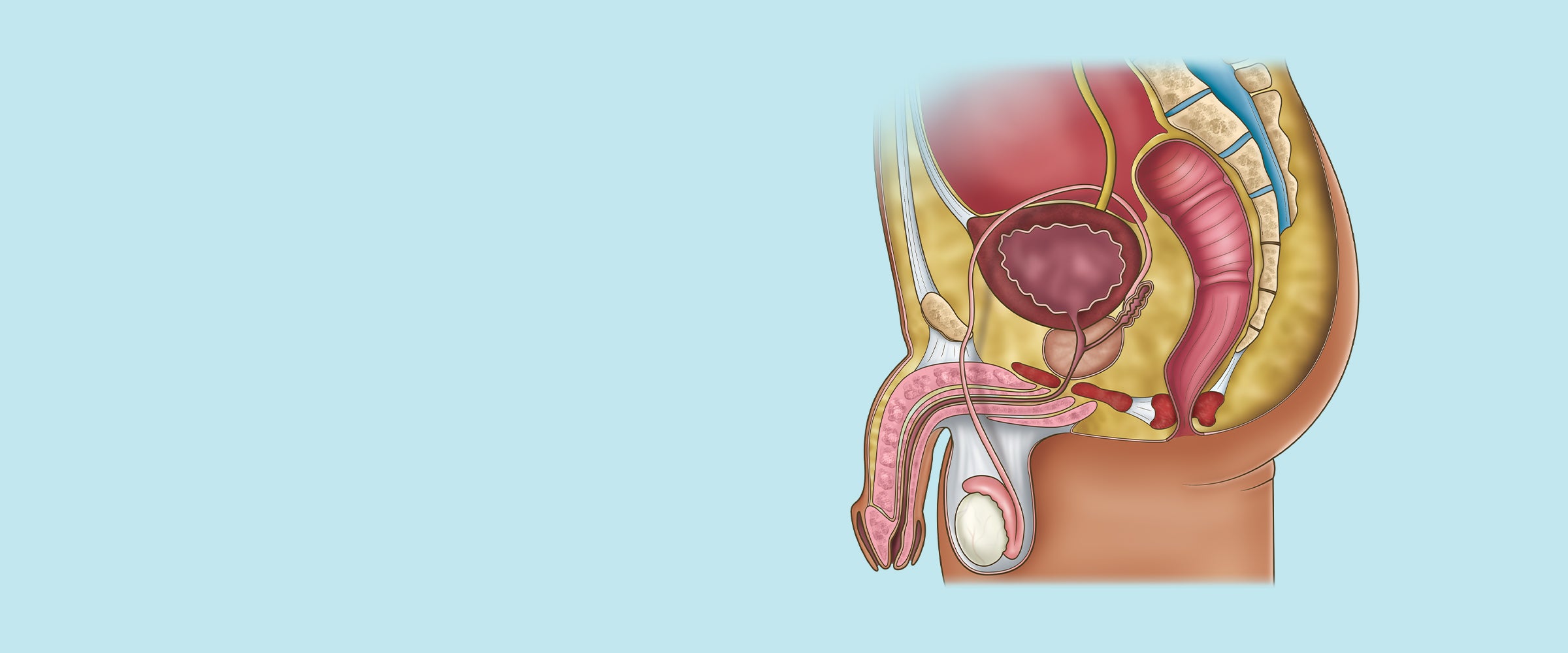
Welcome to our comprehensive Men's Health Resources and Products page. Here, you'll find a wealth of information, expert advice, and a curated selection of products designed to support and improve men's health. Whether you're looking for wellness tips, fitness guidance, or quality health products, you're in the right place.
Men's reproductive anatomy includes the testes, which produce sperm and testosterone, and the epididymis, where sperm mature. Sperm travels through the vas deferens to the prostate gland, which secretes seminal fluid. The penis facilitates intercourse and urination.
The health of men's reproductive anatomy is crucial for overall well-being. Regular check-ups can help detect issues like testicular cancer or prostate problems early. A healthy lifestyle, including a balanced diet and exercise, can support reproductive health and sexual function.

The male reproductive system is responsible for producing, maintaining and transporting sperm which fertilises the female oocyte (also known as an egg) and forms a zygote which contains all the genetic information required to make a baby. Learn more with our male reproductive anatomy poster, ideal for studying and teaching about the male reproductive organs.

The prostate gland plays an important role in the male reproductive system, responsible for releasing semen alongside fluid from other glands and the testicles. The fluid produced by the prostate gland ensures that sperm cells are transported safely for fertilisation. Discover more with our beautifully designed prostate gland anatomy poster, an ideal study aid for students of anatomy and medicine.
Men's mental health and wellbeing are critical aspects of overall health. Societal pressures often discourage men from seeking help, making it crucial to promote open discussions. Encouraging mindfulness, stress management, and seeking professional support can enhance emotional resilience, fostering a healthier and more balanced life for men.
Focusing on mental health is vital for men, as it enables emotional well-being, healthier relationships, and effective coping with life's challenges. Prioritising mental health contributes to a more fulfilling and balanced life. To support this journey, check out our Mental Health: You Can Help Your Mental Health PSHE Poster, designed to promote awareness and self-care strategies.
Teen health is a critical aspect of adolescent well-being. It encompasses physical, emotional, and social aspects. It's important for boys to maintain a balanced diet, regular exercise, and hygiene practices. Educating them about mental health, self-esteem, and respectful relationships is essential. Routine check-ups and vaccinations ensure physical health, and open communication with parents or trusted adults can help address various challenges faced during adolescence.
We're providing the tools to help teens take charge of their health – so they can have the confidence to make the best health choices.
Men's testicle health is crucial for reproductive function and overall well-being. Self-exams can help detect lumps or irregularities, potentially indicating testicular cancer. Protecting the scrotum from injuries and maintaining a healthy lifestyle, including regular exercise and a balanced diet, can support testicle health and hormonal balance.
Regular testicle self-exams are vital for detecting abnormalities early, potentially identifying testicular cancer when it's most treatable. Early detection can improve outcomes and save lives. Here are some easy steps you can follow...
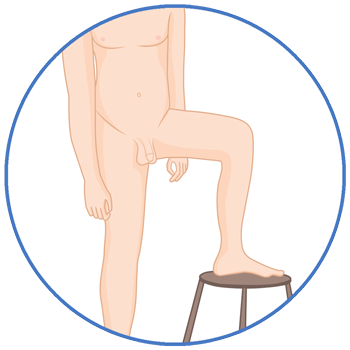
Elevate one leg on a chair or the side of a bath.
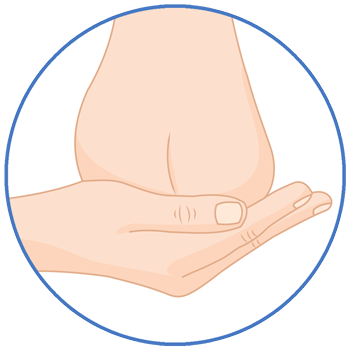
Cup your scrotum in the palm of your hand and feel the weight and shape of each testicle.
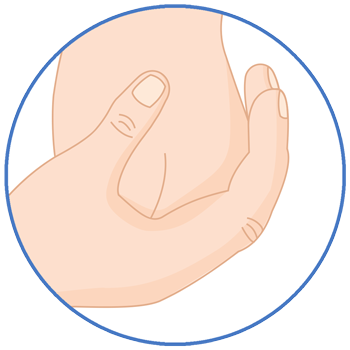
Roll the testicle between your thumb and fingers to explore for lumps.
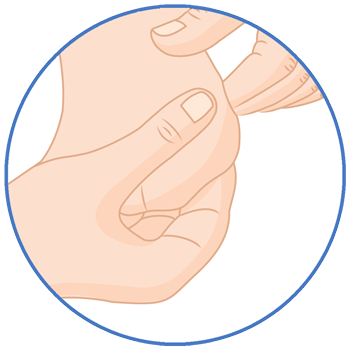
Elevate the other leg and repeat the check on the other testicle.
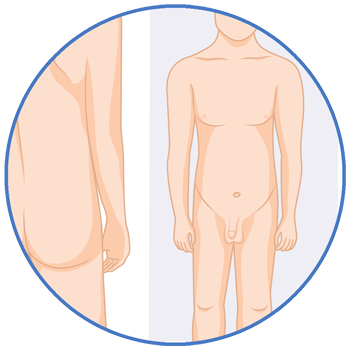
Compare both testicles in the mirror. If you notice a swelling or lump, contact your doctor immediately.
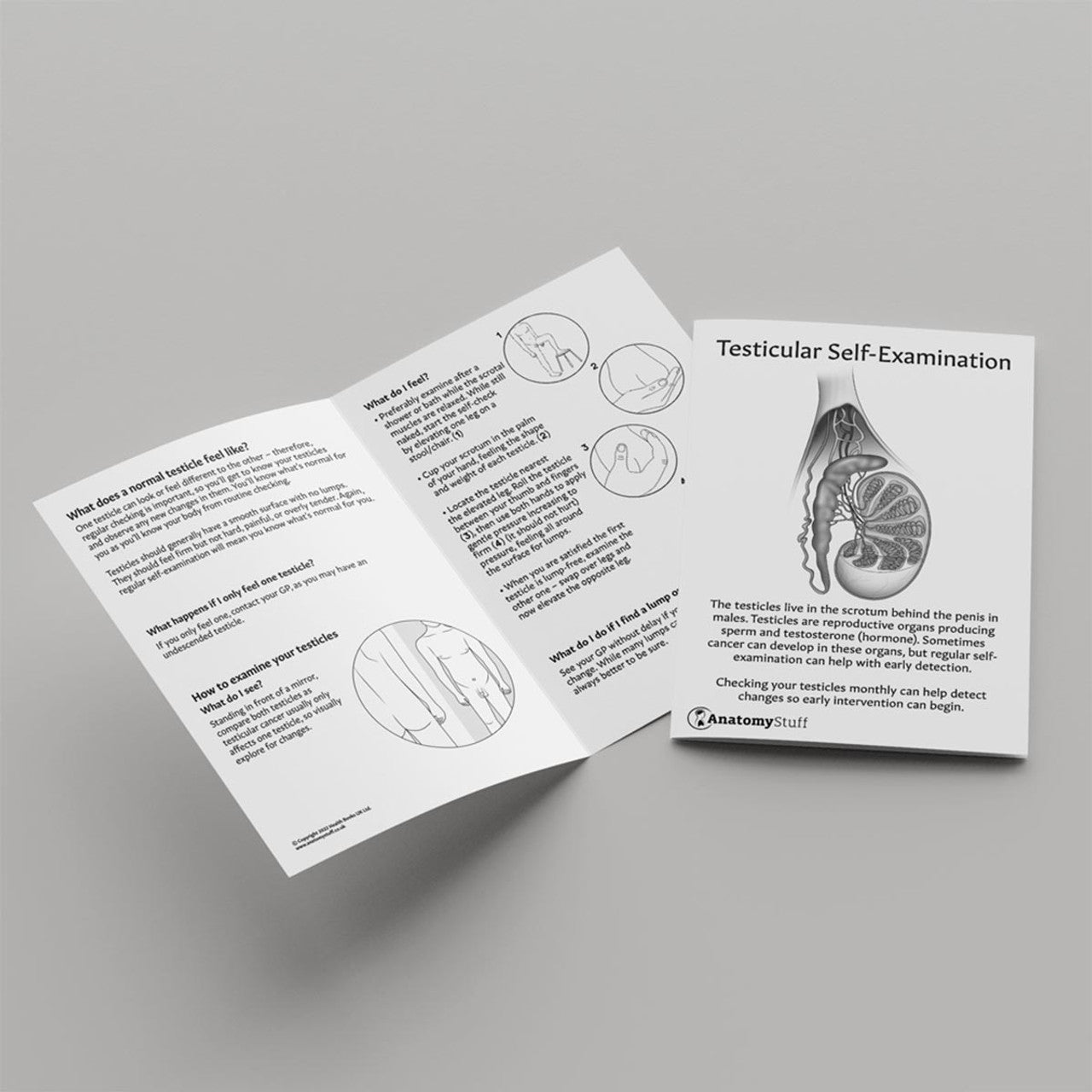
This informative Testicular Self-Examination leaflet is designed to support effective patient education with clear, easy-to-follow instructions on performing self-checks. It provides step-by-step guidance on identifying abnormalities and understanding when to seek medical advice. Detailed illustrations enhance comprehension, ensuring patients feel confident in conducting thorough and accurate self-examinations for early detection and better health awareness.
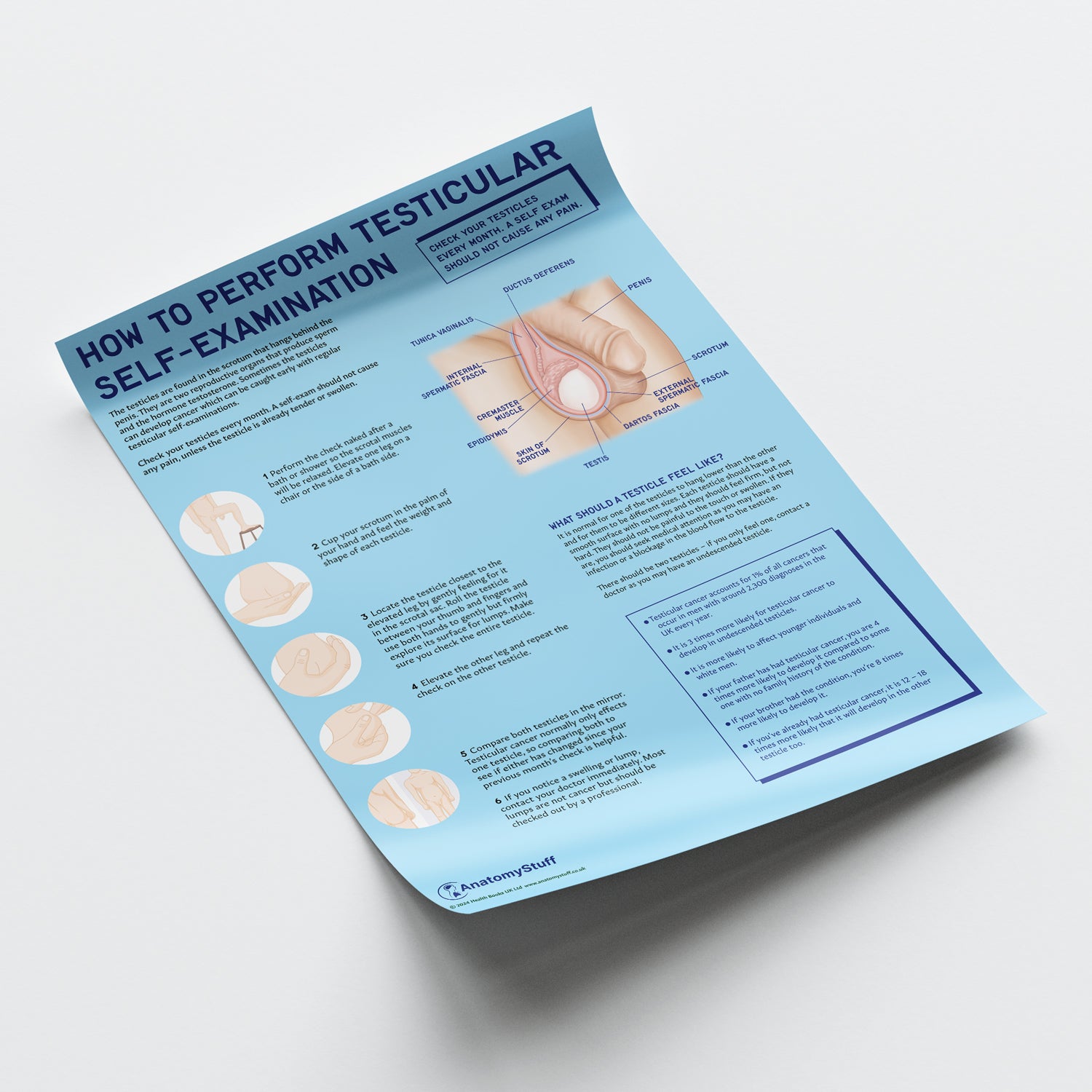
This colourful poster educates viewers on performing effective testicular self-examinations and highlights their importance in detecting abnormalities early. It provides a clear six-step guide, a labelled anatomy of the male genitalia, and tips on recognising normal testicle texture versus when to seek medical help. Designed for both health professionals and the public, it also includes key statistics on testicular cancer and emphasises the importance of early detection.
The prostate gland has four zones: peripheral, central, transitional, and anterior fibromuscular, each with a distinct role. The peripheral zone is the largest and most prone to cancer, while the transitional zone surrounds the urethra and is linked to benign prostatic hyperplasia (BPH). The central zone supports the ejaculatory ducts, and the anterior fibromuscular zone provides structure.
Our Prostate Gland Anatomy Chart visually details these zones, making it ideal for students, professionals, and clinics. Paired with our Zones of the Prostate video, it offers a deeper understanding of prostate health.
Prostate cancer is one of the most common cancers in men and often develops slowly, sometimes without noticeable symptoms in its early stages. However, early detection is crucial for successful treatment and better outcomes. Regular screenings, tests and digital rectal exams, help identify potential issues before symptoms become severe. Consulting a healthcare professional about risk factors and screening options can significantly improve early diagnosis and treatment success.
Checking for prostate cancer is crucial because early detection significantly increases the chances of successful treatment.
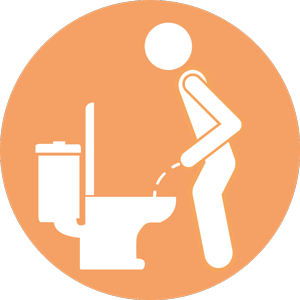
Weak flow when urinating
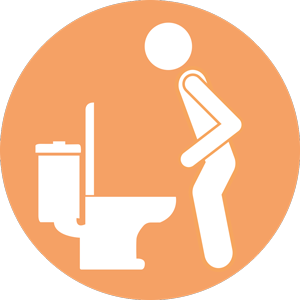
Trouble urinating

Pain or discomfort while sitting

Erectile dysfunction

Sudden urges to urinate

Blood in urine
Raise awareness of prostate cancer with our Signs and Symptoms of Prostate Cancer printable PDF, highlighting key symptoms to watch for. This versatile resource can be used as a poster or handout in clinics, hospitals, community centers, and public spaces, helping individuals recognise warning signs and know when to seek medical advice from their GP.